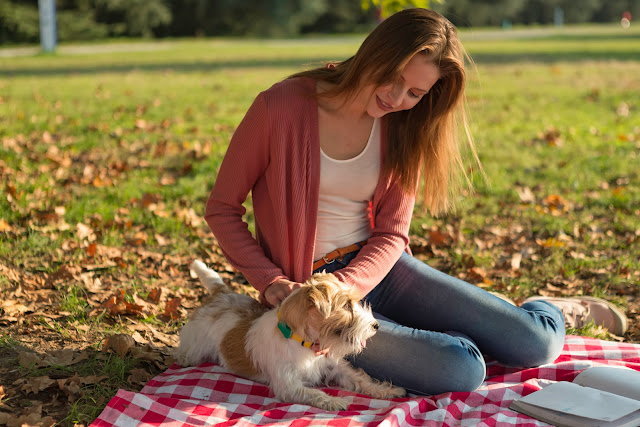 |
| An athletic dog wearing the (waterproof) FitBark. Phil doesn't quite look like this when he is active. |
How active is your dog when you’re not around? Is he or
she restless at night? How do medical conditions impact activity?
I’ve been experimenting with a device called the FitBark,
an accelerometer designed specifically for dogs that I purchased at a recent
veterinary conference. Accelerometers have been increasingly used in animal welfare studies to look at the impact of disease and pain on animal behaviour. The FitBark is marketed for ordinary users, primarily for motivating them to get their dog fit. It is designed to fit on a collar, and weighs
8grams. That doesn’t sound like much but Phil had to get used to it.
 |
| This is more our style. |
The FitBark syncs data with your smartphone or tablet
about how often, when and to what degree your dog is active. So you charge the
device, download the app, complete the details (how old is your dog? What breed?
Does he or she have any medical conditions, if so, what?), fit it to your dog’s
collar and it starts collecting data.
And it’s fascinating. Turns out Phil gets more exercise
when he accompanies me to work than when I take him on a big walk. And he’s a
pretty good sleeper despite his odd nocturnal wandering (most days he scores
above 85 in the sleep department – I feel like that should earn him an honorary
degree).
We’ve only been using it a few weeks but the battery
seems to last around two weeks which is impressive.
The other thing I like about the FitBark is that the
company is mining the data to further understand companion canine activity. For
example, so far it has shown that – around the world – dogs are more active on
weekends. Saturday is the most active day of the weekend, with Sunday a close
second and Friday the third most active day. Which shows there’s scope for more
dog walking earlier in the week.
They’ve also found that puppies are most active between 3
and 6 months of age – the most joyous but simultaneously the most stressful
phase of living with a puppy. Some breeds sleep better than others, senior dogs
have similar activity levels regardless of whether they’re small or large breed
and some breeds really freak out when it comes to fireworks. Dogs diagnosed with osteoarthritis have activity levels reduced by around 30 per cent. You can check out more of the findings on their website under data.
There are a couple of quirks. Like accelerometers for
humans, the FitBark does record some non-active moment – like when Phil wants
to be carried around the block (though he gets a higher score when he’s the one
pounding the pavement). And daily I am told that Phil blows his breed-related
goal out of the water, but being one half the size of an ordinary Maltese I am
not sure how accurate that is.
The company has an ideal aim of your veterinarian syncing
their tablet with your dog’s FitBark and being able to comment on activity
levels. I’m not sure it’s widely used enough for that yet and as a vet I’m yet
to be presented with an owner who wants me to sync with a FitBark, though it’s
a neat concept.
Overall this is an interesting device. I’ve learned that
Phil is much less active when I’m away, so I need to take him on extra walks before
and after. And I’m happy to contribute to citizen science.


